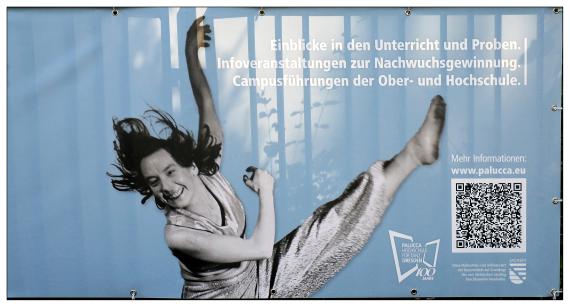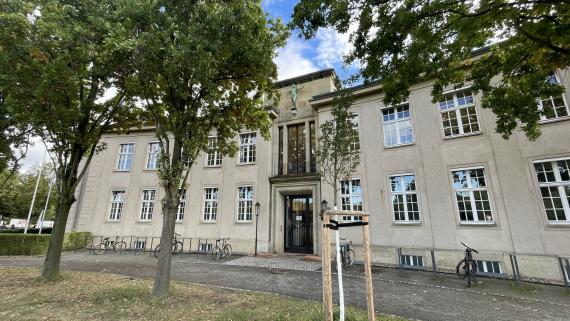Basteiplatz 4 - Palucca Hochschule für Tanz
Sachsen
01277 Dresden
Germany
Gret Palucca was born Margarethe Paluka in Munich on January 8, 1902. Her non-Jewish father Max Paluka was a pharmacist and married Rosa, née Merfeld, who was of Jewish-Hungarian descent. After her parents' failed attempt to gain a foothold in San Francis, California, Gret Palucca returned to Germany with her mother and brother Hans in 1909 and came to Dresden. Her artistic talent became apparent early on and she took ballet lessons with Heinrich Krümler in 1914 before becoming a pupil of Mary Wigman, one of the founders of expressive dance.
In 1925, Gret Palucca founded her own dance school in Dresden, where she developed a new, modern form of dance: physically free, rhythmic and strongly characterized by individuality. Her school soon became one of the most important training centers for modern dance in Europe.
During the Nazi era, her attitude towards the regime was extremely ambivalent out of self-protection. In 1936, Palucca took part in the opening ceremony of the Olympic Games in Berlin as a soloist with a chorography by Mary Wigman with a special permit. However, according to the Nuremberg Laws, she was considered a "half-year dancer". In 1939, she was therefore excluded from the Reich Chamber of Culture, which meant that she was no longer able to teach. She did not have an officially documented, complete performance ban, but she was effectively excluded from public appearances, especially from state-organized Nazi events and concerts. Later, she remained largely silent about this period.
After the Second World War, she immediately resumed her work. In 1945, she reopened the Palucca School Dresden, which was state-recognized in the GDR from 1949. Even under socialist cultural policy, she maintained her artistic standards and preserved a certain independence. She remained active as a teacher and mentor into old age.


Add new comment